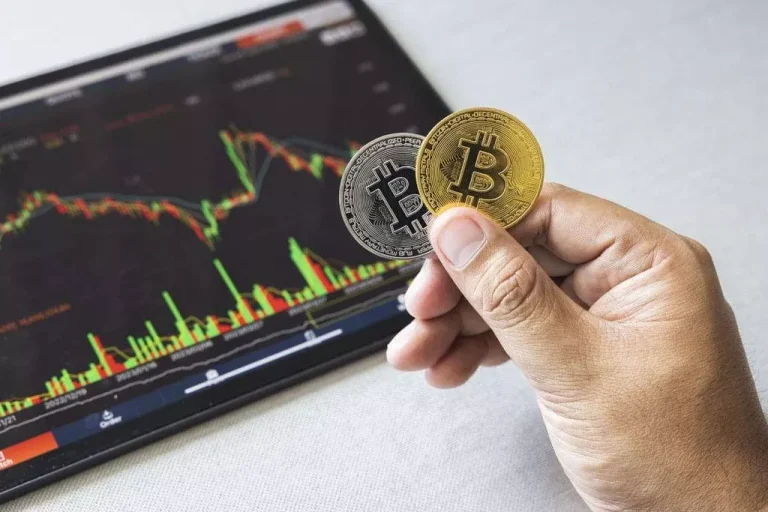If you’re seeking a partner https://www.xcritical.com/ with a proven reputation and customized liquidity solutions, GSR may be a wonderful selection. In order to make a commerce, you’ll almost all the time need to connect with a market maker. Liquidity providers and market makers can stabilize sudden market price actions, usually by putting pending orders, and thereby shield traders from surprising losses. Artificial intelligence is today’s market making, facilitating a clean flow of concluded deals and offering instant liquidity by way of mathematical algorithms. There has definitely been a breakthrough in the buying and selling world with automated programs that can course of up to one million orders simultaneously. These methods have expanded the probabilities for trading systems and have enabled the event of recent applied sciences to extend the liquidity of the market.

Nyse: The Home Of Exchange Traded Products
Using customized algorithmic methods and proprietary software, it enhances liquidity for early-stage projects while minimizing crypto asset worth fluctuations. This makes it an ideal companion for smaller platforms seeking to entice merchants and buyers. Market makers actively participate available in the market by inserting the most effective bid and ask orders and leveraging arbitrage opportunities. In contrast, liquidity providers play a more passive role by supplying orders with out participating in dynamic trading strategies. A Liquidity Provider (LP) focuses on offering actual liquidity to the token market, ensuring stability in transactions.
Assembly The Volatility Challenge
Market costs are constantly altering, so core liquidity providers don’t benefit from taking up the danger of providing fastened spreads. Dealing desk brokers, nevertheless, may be prepared to take on the danger of attracting clients that favor a trading technique of stable prices during occasions of market volatility. Both these systemically necessary individuals of market relations carry out the identical task within the broad sense of their functionality. However, in a narrower sense, there are particular differences between them, which we are going to discuss below. They are individuals or organizations that deposit digital belongings into a liquidity pool, offering the mandatory liquidity for merchants to buy and sell belongings. In return, liquidity providers obtain a share of the trading fees generated by the pool’s exercise.
In this case, the unfavorable results are amplified, as the MM entities possess significantly larger foreign exchange volumes than any other institution worldwide. Liquidity suppliers are instantly linked to the interbank Forex market, while market makers operate in specific markets or devices as designated participants. The revenue of a market maker is the difference between the bid value, the price at which the agency is prepared to buy a stock, and the ask price, the price at which the firm is willing to promote it. Supposing that equal amounts of purchase and promote orders arrive and the worth never changes, this is the quantity that the market maker will acquire on every round journey. Better perceive the ESG dangers and alternatives of equity and glued revenue securities (including listed corporations, corporate bonds, MBS, municipals and sovereigns) with ICE ESG information units.
The spread refers to the distinction between the buy and promote worth of a financial instrument. In this text, we’ll delve into the concept of a liquidity supplier vs. market maker, their functions, and the way they impact traders’ experiences and the market as a whole. When an investor with a considerable quantity of capital buys and sells in depth quantities of an asset, the impact on prices and other buyers might be dramatic.
Market makers create a market for particular securities by providing bid and ask costs with their very own capital. Liquidity suppliers make positive the forex market remains lively, filling supply and demand gaps, sustaining worth stability, and enabling seamless trading for all individuals. The 21st-century digital revolution has allowed small and mid-sized businesses to compete with established and capital-intensive industry giants. Today, even the smallest companies can theoretically turn into brokers, supply banking companies, create e-commerce retailers and much more. Previously, none of these activities were even accessible to companies with limited budgets. Tier 2 LPs are a superb instance of digital disruption, allowing smaller companies to liaise between tier 1 LPs and the overall foreign exchange market.

NYSE Pillar is designed to enhance efficiency and scale back complexity for purchasers, whereas enhancing consistency, efficiency and resiliency. Significant liquidity and anonymity on the market maker liquidity provider close help to minimize the market influence costs of huge trades. Ensuring enough liquidity in trading pairs used for settlements enhances payment effectivity and reduces processing delays. Joining the NYSE Exchanges allows corporations superior market access, technology solutions, trade experience and information merchandise that drive efficiency every day. Market makers utilize superior expertise, similar to automated crypto buying and selling algorithms, to analyze market conditions, order guide depths, and arbitrage alternatives.
They join a dealer with probably the most powerful banks and funds ( BNP Paribas, Goldman Sachs, JP Morgan, and so on.). On the opposite hand, Tier 2 suppliers exist as well, and beginner business house owners need to understand their working rules.Tier 2 suppliers fall into the class of second-level LPs. These LPs provide brokers with entry to a certain bank, Electronic Communication Network (ECN), or exchange.
When a retail investor buys a safety from a buying and selling firm that is performing as principal, the agency fills the order using its own stock, permitting it to learn from the bid-ask unfold. A bank, monetary institution, or buying and selling agency could act as a core liquidity supplier. The completely different enterprise models and capabilities of these liquidity providers enable them to serve the market in different methods. Core liquidity providers make a market for an asset by offering their holdings on the market at any given time whereas simultaneously shopping for extra of them. But it also permits traders to buy shares each time they want to without waiting for an additional investor to decide to sell.
- But it additionally permits traders to purchase shares every time they need to without ready for another investor to resolve to sell.
- However, in addition they assume the danger of impermanent loss, which might occur when the value of the assets within the pool deviates considerably from the market value.
- By meeting stringent quoting requirements these corporations are eligible for enhanced incentive constructions.
- Including new incentives to encourage participation in much less lively and new ETFs.
For instance, when an investor sells a financial Mining pool instrument to the market maker there is a threat that the price will decline and the market maker incurs a loss on its place. The bid-ask spread is the compensation to the market maker for the danger it takes on. The foundation of effective trading in monetary markets are liquidity providers, or LPs.
The financial system has slowly advanced towards an increasingly automated course of over the past two decades. A key element of that transition is the alternative of traditional market makers with pc applications that make choices in fractions of a second using subtle algorithms. A liquidity supplier (LP) is an establishment that supplies the mandatory capital to guarantee that there is all the time enough liquidity within the forex market. By offering competitive bid and ask prices, liquidity providers assist keep market stability and effectivity. In the world of foreign forex trading, understanding the differences between a liquidity provider and a market maker is crucial for traders.
Therefore, within the Liquidity Provider vs Market Maker debate, it’s clear that the forex trade depends on each to navigate and mitigate market challenges. The main motivation for liquidity providers is to facilitate trading and earn spreads, whereas market makers goal to revenue from the unfold by assuming market danger. A core liquidity supplier is a financial establishment that acts as a go-between in the securities markets.
Working with liquidity suppliers is the vital thing to elevated trading exercise in any class of financial devices in any market. Financial markets remain liquid—meaning merchants can persistently buy and promote belongings on demand—thanks to core liquidity suppliers. These are usually banks and other financial corporations that purchase and sell giant quantities of property to ensure their availability. Banks with massive stability sheets can accommodate sizable transactions, enabling them to make markets for numerous monetary belongings. For example, the world’s largest banks are core liquidity suppliers in the foreign exchange markets. Without market makers, buyers and brokers of all styles and sizes would have a tougher time buying or selling financial devices.
